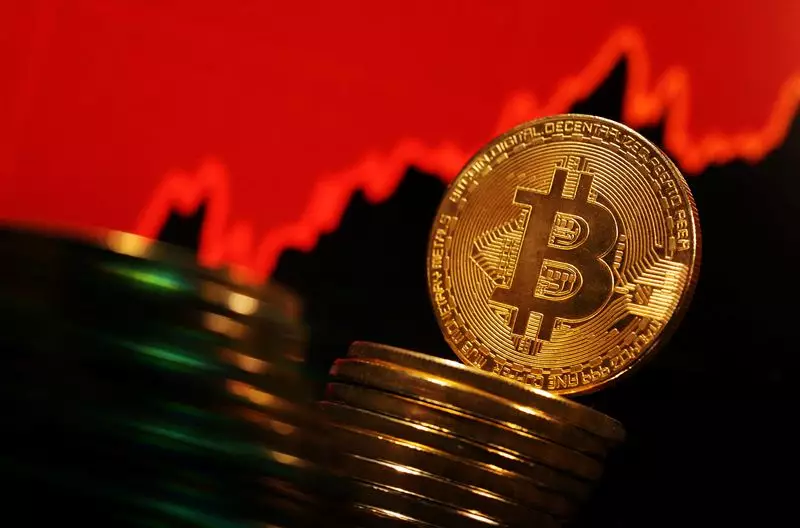In the ever-shifting landscape of cryptocurrency, Bitcoin recently displayed a mix of resilience and volatility. After suffering a decline late last week, the largest cryptocurrency by market capitalization managed to claw back some of its losses with a modest 1.8% increase, bringing its value to $93,936.00. This recovery can be attributed to a combination of profit-taking behaviors among traders who remained cautiously optimistic following a rally that had taken Bitcoin close to its all-time highs. However, the excitement was tempered by disappointment as Bitcoin fell short of breaking the psychological $100,000 barrier—a milestone that many investors had eagerly anticipated.
The uncertainties in both the cryptocurrency and broader financial markets were exacerbated by geopolitical developments. Tensions escalated when President-elect Donald Trump hinted at the possibility of introducing additional trade tariffs, raising red flags about a potential trade war. Such dynamics have an immediate impact on risk appetite, leading traders to adopt a more cautious stance. In this environment, Bitcoin’s price fluctuations reflect more than just market sentiment; they are intertwined with broader economic factors and political maneuvers.
Upcoming Economic Indicators
This week proves pivotal for investors as critical U.S. economic indicators come into focus. Among these is the Personal Consumption Expenditures (PCE) Price Index, a vital measure of inflation closely monitored by the Federal Reserve. As the central bank grapples with its monetary policy, expectations surrounding interest rate adjustments loom large. Anticipation of this data has created a fertile ground for speculation, with traders keenly aware that sustained inflation could reduce the impetus for aggressive rate cuts.
Furthermore, revisions to third-quarter GDP data are expected to unveil fresh insights into the resilience of the U.S. economy. Recent trends have sparked concern that the Federal Reserve may not act as decisively as previously assumed, particularly if inflationary pressures persist. Such economic data play a crucial role in shaping investor expectations and, by extension, the performance of cryptocurrencies, which often exhibit heightened sensitivity to macroeconomic cues.
The political landscape in the U.S. also holds significant implications for the future of cryptocurrencies. President-elect Trump’s administration has stirred a mix of excitement and apprehension regarding its policies towards digital assets. Although Trump has made past assertions about wanting to position the U.S. as the global “crypto capital,” the absence of concrete regulatory guidelines has left traders uncertain. Speculation abounds regarding potential shifts in regulatory oversight, particularly relating to the Commodity Futures Trading Commission (CFTC) and the Securities and Exchange Commission (SEC).
Trump’s proposed restructuring of oversight could enhance CFTC’s role in regulating digital assets, such as Bitcoin and Ethereum, categorizing them as commodities rather than securities. Such a reclassification might alleviate burdensome SEC regulations that have hindered market clarity. With the outgoing SEC Chair, Gary Gensler, signaling his intention to resign concurrently with Trump’s inauguration, questions remain about how the upcoming administration will address regulatory frameworks essential for the growth of the crypto sector.
Bitcoin’s rally has not only buoyed its price but also created a ripple effect throughout the broader altcoin market. Ether, the second-largest cryptocurrency, saw an impressive surge of 5%, reaching $3,488.35. Other altcoins such as XRP, Solana, Cardano, and Polygon also experienced substantial gains ranging between 3.5% and 9%. Even meme tokens like Dogecoin managed to capture attention, adding approximately 4% to their value.
This interconnectedness emphasizes how Bitcoin often acts as a bellwether for the cryptocurrency market. When Bitcoin exhibits positive momentum, it tends to bolster confidence across the entire ecosystem, driving investments into alternative digital assets. However, the intrinsic volatility and speculative nature of cryptocurrencies mean that these positive trends can change rapidly, influenced by external economic, political, or regulatory factors.
As Bitcoin dances around significant resistance levels amidst a backdrop of economic uncertainty and political transition, investors are reminded of the delicate balance between opportunity and risk inherent to the cryptocurrency market. The coming days and weeks, characterized by critical economic indicators and potential policy shifts, will undoubtedly play a pivotal role in shaping not just Bitcoin’s trajectory but the entire landscape of digital assets. Therefore, staying informed and agile in this volatile environment remains paramount for all stakeholders involved.

